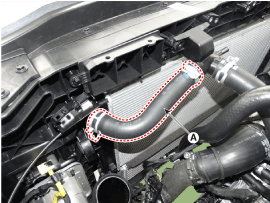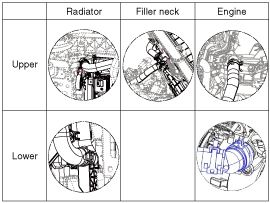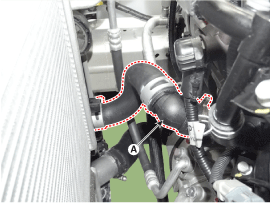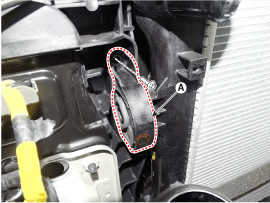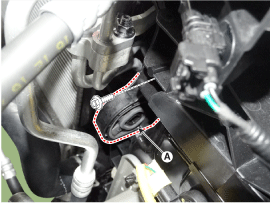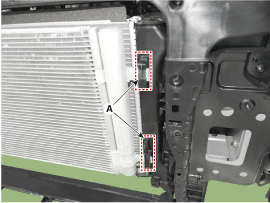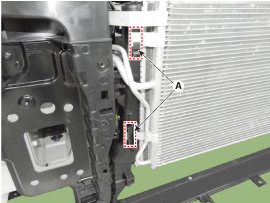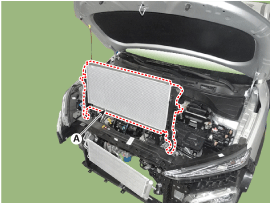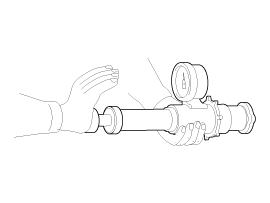Hyundai Kona: Cooling System / Radiator Repair procedures
| Removal and Installation |
| 1. |
Loosen the drain plug, and drain the coolant and remove the radiator
cap to speed draning.
(Refer to Cooling System - "Coolant")
|
| 2. |
Remove the cooling fan.
(Refer to Cooling System - "Cooling Fan")
|
| 3. |
Remove the radiator upper hose (A).
|
| 4. |
Remove the radiator lower hose (A).
|
| 5. |
Remove the front bumper.
(Refer to Body (Interior and Exterior) - "Front Bumper")
|
| 6. |
Remove the radiator air guard (A).
|
| 7. |
Remove the intercooler.
(Refer to Intake and Exhaust System - "Intercooler")
|
| 8. |
Remove the radiator upper bracket bolts (A).
[LH]
[RH]
|
| 9. |
Disconnect the condenser (A) from radiator.
[LH]
[RH]
|
| 10. |
Pull the radiator (A) upward and remove it from engine room.
|
| 11. |
Install in the reverse order of removal.
|
| 12. |
Fill the radiator with coolant.
(Refer to cooling system - "Coolant")
|
| 13. |
Run engine and check for leaks.
|
| 14. |
Recheck engine coolant level.
|
| Inspection |
| 1. |
Remove the radiator cap, wet its seal with engine coolant, and then
install it on a pressure tester.
|
| 2. |
Apply a pressure of 93.16-122.58kpa (0.95-1.25kg/cm², 13.51-17.78psi).
|
| 3. |
Check for a drop in pressure.
|
| 4. |
If the pressure drops, replace the cap.
|
 Radiator Components and components location
Radiator Components and components location
Components
1. Radiator Assembly
2. Radiator upper mounting bracket
3. Filler neck assembly
4. Radiator lower hose
5. Radiator upper hose
6. Radiato ...
 Reservoir Tank Repair procedures
Reservoir Tank Repair procedures
Removal and Installation
1.
Loosen the drain plug and drain the coolant and remove the radiator
cap to speed draining.
(Refer to Cooling System - "Coo ...
Other information:
Hyundai Kona (OS) 2018-2025 Service Manual: Rear Shock Absorber Repair procedures
Removal
1.
Loosen the wheel nuts slightly.
Raise the vehicle, and make sure it is securely supported.
2.
Remove the rear wheel and tire (A) from front hub.
Tightening torque :
107.9 - 127.5 N ...
Hyundai Kona (OS) 2018-2025 Service Manual: Back-up Lamps Repair procedures
Removal
LHD
1.
Disconnect the negative (-) battery terminal.
2.
Remove the rear bubper.
(Refer to Body - "Rear Bumper")
3.
Loosen the screw and then remove ...

